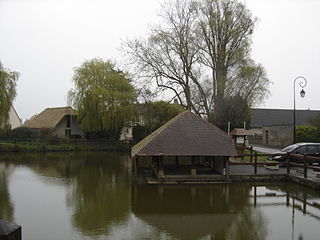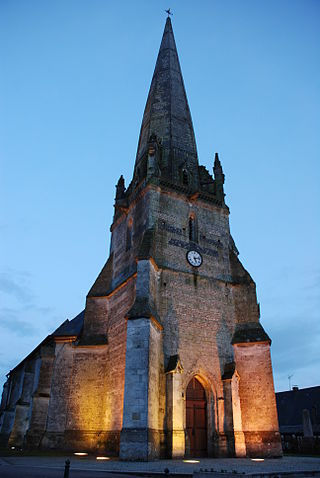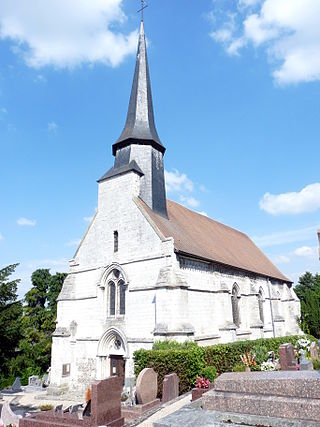
Seine-Maritime is a department of France in the Normandy region of northern France. It is situated on the northern coast of France, at the mouth of the Seine, and includes the cities of Rouen and Le Havre. Until 1955 it was named Seine-Inférieure. It had a population of 1,255,633 in 2019.

Blainville-Crevon is a commune in the Seine-Maritime département of the Normandy region of northern France.

Bavent is a commune in the Calvados department in the Normandy region of north-western France.

Bois-Guillaume is a commune in the Seine-Maritime department in the Normandy region in northern France.

Guerville is a commune in the Seine-Maritime department in the Normandy region in northern France.

Fourcigny is a commune in the Somme department in Hauts-de-France in northern France.
Auberville-la-Renault is a commune in the Seine-Maritime department in the Normandy region in northern France.

Saint-Martin-de-Boscherville is a commune in the Seine-Maritime department in the Normandy region in northern France.
Ouville-la-Rivière is a commune in the Seine-Maritime department in the Normandy region in north-western France.

Bacqueville-en-Caux is a commune in the Seine-Maritime department in the Normandy region in northern France.

Hénouville is a commune in the Seine-Maritime department in the Normandy region in northern France.
Beaurepaire is a commune in the Seine-Maritime department in the Normandy region in northern France.

Bonsecours is a commune in the Seine-Maritime department in the Normandy region in northern France.

La Cerlangue is a commune in the Seine-Maritime department in the Normandy region in northern France.

Moulineaux is a commune in the Seine-Maritime department in the Normandy region in northern France.

Saint-Aubin-lès-Elbeuf is a commune in the Seine-Maritime department in the Normandy region in northern France.

La Ferté-Saint-Samson is a commune in the Seine-Maritime department in the Normandy region in northern France.
Varneville-Bretteville is a commune in the Seine-Maritime department in the Normandy region in northern France.
The Canton of Notre-Dame-de-Bondeville is a canton situated in the Seine-Maritime département and in the Normandy region of northern France.

Placenames in Normandy have a variety of origins. Some belong to the common heritage of the Langue d'oïl extension zone in northern France and Belgium; this is called "Pre-Normanic". Others contain Old Norse and Old English male names and toponymic appellatives. These intermingle with Romance male names and place-name elements to create a very specific superstratum, typical of Normandy within the extension zone of the Langue d'oïl. These are sometimes called "Normanic".

















